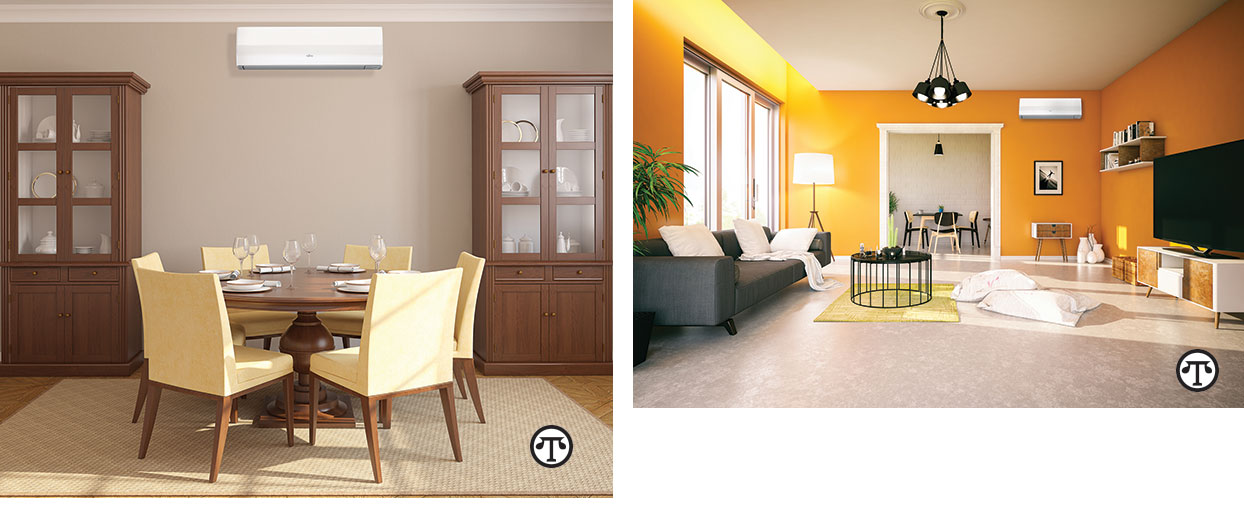
(NAPSI)—Many homeowners consider ecofriendliness when home product shopping and airconditioning systems are no exception. In fact, home cooling accounts for nearly half of energy use and is responsible for nearly 100 million tons of carbon dioxide emissions every year.
The good news is following some practical tips will help you stay cool, save money and respect the environment. With air conditioner energy expenses costing homeowners more than $11 billion a year, small steps can go a long way.
Try these useful energy-saving ideas:
Boost Energy Efficiency, Lower Bills Up to 25 Percent
Upgrading your system can significantly reduce your utility expense. The most energy-efficient heating and cooling products on the market, ductless mini-split systems, can save as much as 25 percent on your bill.
Here’s how ductless mini-split systems work: Thin copper tubing is used to pump refrigerant from an outdoor compressor directly into an indoor air-handling unit, where the air is quietly distributed to the interior space. This eliminates the need for basement or attic evaporators and bulky, expensive ductwork. Mini-splits are easy to install and usually require only a 3- to 4-inch hole through a wall or ceiling to connect the indoor and outdoor units.
Enjoy Rebates and Tax Incentives
To encourage homeowners to purchase energy-efficient products and reduce greenhouse gases, many utility companies offer rebates on qualified products. To estimate how much money you could save on a ductless mini-split system, you can visit the efficiency calculator at www.constantcomfort.com. The federal stimulus package also offers significant tax credits to homeowners who invest in new insulation and energy-efficient windows and heating/cooling systems.
Breathe Cleaner Air, Reduce Environmental Impact
Mini-split systems are engineered to ensure cleaner interior air. No ductwork means no dust or mold to blow around a home and the built-in ion deodorization filter absorbs odors. Dust, mold spores and microorganisms are caught in the filter, promoting more allergen-free air. Further, ductless mini-split systems are designed with Earth-friendly elements, such as using a refrigerant called R-410A, known for its potential for zero ozone depletion.
Personalize Your Comfort Level
Take control of your comfort. Ductless mini-split systems let you control the individual temperature in each room, so you don’t waste money cooling unused spaces such as guest bedrooms, bonus rooms, sunrooms and basements. Ductless systems operate at much higher efficiency levels than central forced-air systems and window units, as duct losses in a central AC system can account for more than 30 percent of your energy consumption. One leading mini-split manufacturer, Fujitsu General, offers the most energy-efficient selection on the market, including wall- and floor-mounted, slim duct and compact cassette indoor units. Plus, the free FGLair app enables certain systems to be controlled from anywhere with a smartphone or tablet.
Simple Savers
Don’t forget these easy energy-savers. Close blinds, shades and draperies facing the sun to keep out the sun’s heat and help fans and air conditioners cool more efficiently. Seal holes and cracks around doors and windows. Eliminate air leaks around windows with foam insulation or weather stripping. Use ceiling and other fans to provide additional cooling and better circulation. Finally, increase your attic insulation.
Today’s more energy-efficient cooling systems offer a healthier home environment, decreased fossil fuel consumption, reduced greenhouse gas—plus, the added bonus of lower utility bills. Many Fujitsu systems with the Energy Star rating are more than twice as efficient as the minimum standard set by the government.
To learn more or find a contractor nearby, call (888) 888-3424 or visit www.constantcomfort.com or www.fujitsugeneral.com.
“Today’s energy-efficient cooling systems offer a healthier home environment, decreased fossil fuel consumption, reduced greenhouse gas and lower utility bills. Many systems with the Energy Star rating are more than twice as efficient as the government standard. http://bit.ly/2pZfWGx”
